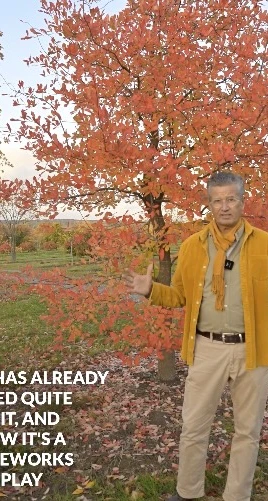
Even – or especially – in February, we fondly remember the brilliant colors that Nyssa sylvatica unfolds in autumn. This tree, still rare in our region and also known as the Tupelo tree, enchants with an impressive play of colors - from deep red to radiant orange to intense yellow. No specimen resembles another, and it is precisely this individuality that makes it so special.
Nyssa sylvatica is a true climate tree. It defies many challenges, copes with heat and cold - but there's one thing it absolutely needs: water. It feels most comfortable in moist, heavy soils, such as those found here at the Lorenz von Ehren tree nursery in Hamburg. Incidentally, this nursery is unique - it is the only one worldwide located in the middle of a metropolitan city.
The special appeal of Nyssa sylvatica lies in its individual coloration. While some specimens shine in brilliant red, others present themselves in glowing orange or sunny yellow. The intensity of the colors can hardly be surpassed - a rich, fiery red that transforms any garden into a spectacle of color.
Even though Nyssa sylvatica has its grand appearance in autumn, it enriches gardens and landscapes throughout the year. Its shade-providing crown in summer, its elegant growth form, and its robustness make it a versatile tree with character. While we now wait for spring in February, it's worth thinking about this special tree that will delight us again later in the year with its play of colors.
We use cookies to personalise content and to analyse our traffic. You consent to our cookies if you continue to use our website.